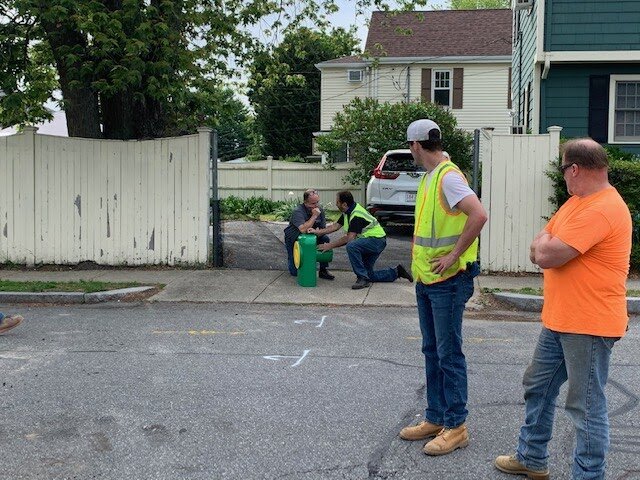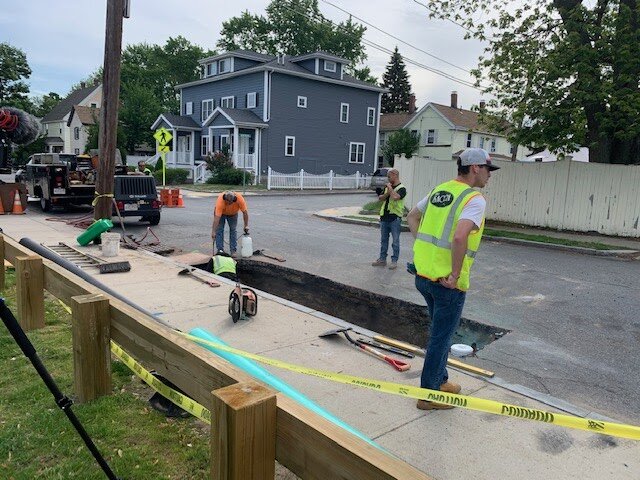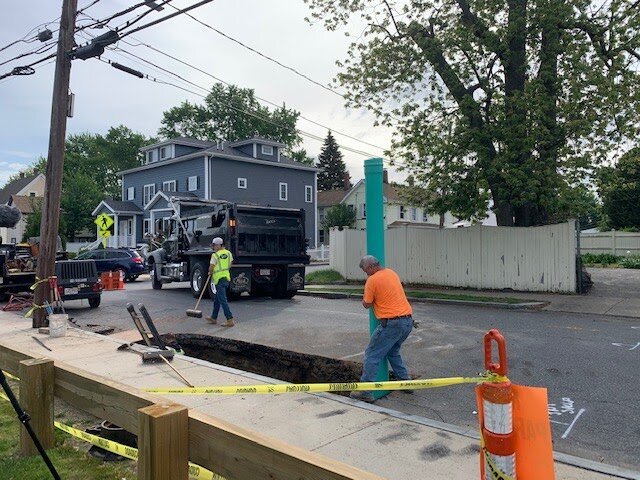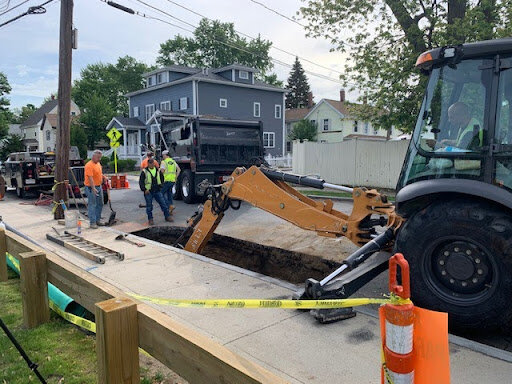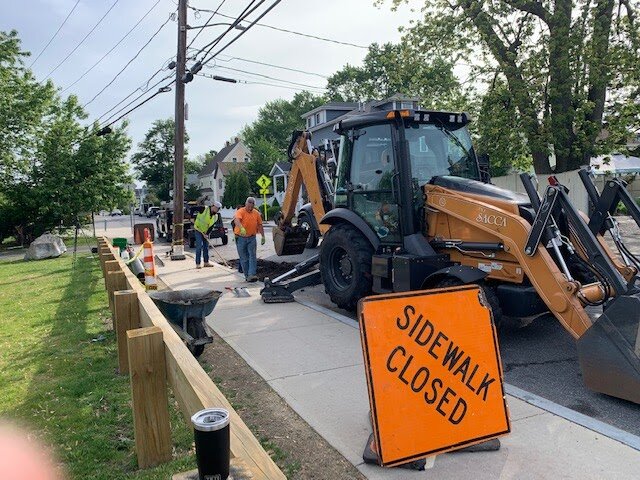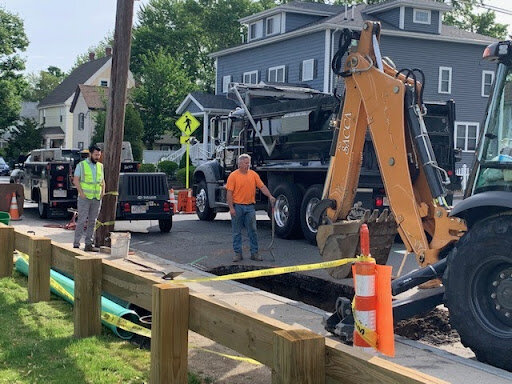Infiltration trenches in the Mystic
Small but Mighty
MyRWA is working with municipalities to build stormwater infiltration trenches throughout the watershed to reduce stormwater pollution entering our waterways. So far, we have constructed over 120 trenches, and many more have been sited in Arlington, Lexington, Medford, Melrose, Everett, Reading, and Woburn.
The most recent round of stormwater infiltration trench installation in the communities of Arlington, Winchester, and Medford was made possible through a Section 319 Non-Point Source Pollution grant from the Environmental Protection Agency (EPA), administered through the Massachusetts Department of Environmental Protection. Previous construction has also been supported by the Massachusetts Office of Coastal Zone Management.
WHAT IS A STORMWATER INFILTRATION TRENCH?
Rain that falls on roofs, roads and parking lots in a storm, called “stormwater runoff”, is carried directly to rivers and streams through a system of underground stormwater pipes, carrying pollutants it picks up along the way. One result in urban areas: too much of the nutrient phosphorus, which leads to excessive growth of invasive plants, poor fish habitat, and blooms of toxic cyanobacteria that are a threat to public health.
Infiltration trenches are nature-based green infrastructure that reduce runoff by redirecting some of that stormwater to infiltrate the ground. Cost-effective and easy to install, these trenches effectively filter out phosphorous from rain and snowmelt.
The trenches are installed adjacent to a storm drain in the road, and when complete they are completely invisible. They are made by digging a trench next to the storm drain, running a perforated pipe from the storm drain’s catch basin through the trench, and then filling the trench with crushed stone. The layers of stone allow for a slow filtration of the first flush of stormwater, which carries the majority of pollutants.
In collaboration with other elements of green infrastructure, like rain gardens, infiltration trenches are a simple way to help keep our waterways significantly cleaner—for our own benefit and that of local wildlife. That’s why MyRWA has been focusing on infiltration trench installation at a regional scale and education about this method of stormwater management.
see where we’ve built
Details: Trench Design and installation (for engineers)
The stormwater trenches being rolled out in the Mystic River watershed represent an innovative approach to stormwater management for phosphorus reduction. Instead of building large-scale structures that require large parcels and complicated construction techniques, municipalities can build these easy-to-deploy retrofits to existing catch basins in a cost-effective manner, and even work them into routine road work. Each unit makes a small contribution, but multiplied across the landscape in a distributed way, they can make a larger cumulative impact with multiple co-benefits.
The standard design emerged from workshops led by US-EPA as part of the Alternative TMDL process on phosphorus management completed in 2020, and represents a collaboration between the Town of Arlington and the University of New Hampshire Stormwater Center.
A stormwater trench is sized to capture and treat the first 0.1-0.3 inches of stormwater runoff during a rain event. This BMP consists of a stone-filled trench connected to a catch basin in which the “first flush” of runoff is diverted into a perforated pipe and rainwater is able to percolate into the soil, removing pollutants that otherwise would have made it to neighboring water bodies.
Interested in building these trenches in your own community?
View some sample plans from the Town of Arlington here, or read the final report to learn more about the project.
Watch a video on how to site, design, and construct these BMPs.
Get to know EPA’s BATT tool, a tool to calculate pollutant removal.




